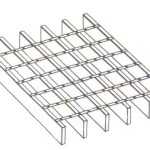Essential Aspects of Interlocking Vinyl Plank Flooring Installation
Interlocking vinyl plank flooring, renowned for its durability, ease of installation, and aesthetic appeal, has become a popular choice for homeowners and businesses alike. Here are some fundamental aspects to consider during the installation process:
Planning and Preparation:
Before commencing the installation, it's crucial to meticulously plan and prepare the subfloor. Ensure the subfloor is level, smooth, and free from any imperfections or debris. An uneven subfloor can result in uneven plank positioning, affecting the overall stability and durability of the flooring.
Choosing the Right Planks:
Vinyl plank flooring is available in a wide variety of colors, textures, and finishes. Select planks that complement your desired aesthetic and space. Consider the traffic pattern and usage of the room when determining the appropriate thickness and durability of the planks.
Proper Acclimation:
Prior to installation, allow the vinyl planks to acclimate to the temperature and humidity of the room where they will be installed. This process ensures the planks expand or contract appropriately, preventing potential buckling or gapping in the future.
Underlayment Installation:
An appropriate underlayment beneath the vinyl planks is essential for soundproofing, moisture resistance, and additional comfort underfoot. Choose an underlayment specifically designed for vinyl plank flooring and follow the manufacturer's instructions for proper installation.
Plank Placement and Interlocking:
Start installing the planks from a corner of the room, ensuring the first row is straight and aligned. Interlock the planks by aligning the tongues and grooves of adjacent planks. Tap them together gently, ensuring a secure and seamless connection. Stagger the joints of adjacent rows for added strength and stability.
Trimming and Cutting:
Along walls and obstacles, it may be necessary to trim or cut the planks to fit. Measure accurately and use a sharp utility knife or flooring cutter to achieve precise cuts. Ensure the cuts are clean and free of any burrs or uneven edges.
Expansion Gaps:
Leave a small expansion gap around the perimeter of the room to allow for natural expansion and contraction of the flooring. This gap will be covered by baseboards or moldings installed later.
Post-Installation Care:
Once the installation is complete, clean the floor thoroughly to remove any loose debris or dirt. Avoid using abrasive cleaners or excessive water, as these can damage the flooring. Use floor protectors under furniture and appliances to prevent scratches or dents.

How To Maintain The Interlocking Vinyl Tile Floor 3c Flooring China Rigid Core Luxury Plank Pvc Sheeet Manufacturer

A Complete Guide How To Stagger Vinyl Plank Flooring Whole Cabinet Supply

Tips For Installing Vinyl Plank Over Concrete Floors Lemon Thistle

Flooring Installation Comparison Guide System Vs Glue Down Method Floorrich

Tips For Installing Vinyl Plank Over Concrete Floors Lemon Thistle

A Beginner S Guide To Installing Vinyl Plank Flooring Dumpsters Com

How To Install Vinyl Plank Flooring As A Beginner Home Renovation

Cost To Install Vinyl Plank Flooring A Complete Guide For 2024 Forbes Home

How To Install Vinyl Plank Flooring As A Beginner Home Renovation

Plank Interlocking Vinyl Flooring At Rs 125 Sq Ft In Mumbai Id 18346266462
Related Posts








